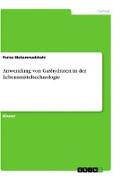Anwendung von Gashydraten in der Lebensmitteltechnologie
BücherAngebote / Angebote:
Klausur aus dem Jahr 2019 im Fachbereich Lebensmitteltechnologie, Technische Universität Berlin, Sprache: Deutsch, Abstract: In this project, the concentration process via gas hydrate formation of tomato juice and orange juice was considered and the effects of temperature and pressure examined. The results showed that the removal of water through the Formation of Co2 hydrate is an efficient technology. In addition, other processes in food technology involving the formation of gas hydrates were also considered. For example CXF, which works differently than the concentration process?The CXF could maintain apple parenchyma tissue more effectively than FAP. The texture quality and cellular integrity of CXF samples were found to be as good as that of fresh samples. In addition, the study by the University of Natural Resources and Life Sciences in Vienna was considered to see what health-related differences there are between organic and conventional apple juice.In addition, this work provides an overview of various methods for determining the parameters that determine the quality of apple juice (for example HPLC method for vitamin analysis or enzymes). Finally, organic apple juices showed higher concentrations of health-relevant such as vitamin C. Statistical methods and evaluations play an important role in the summary of the experiments and therefore they were also considered in this work.A test plan was set up to examine two different apple juices. A conventional juice should be compared to an apple juice made with gas hydrates. Four different examination methods were chosen, which means that each sample should be measured at least 8 times and the results should be statistically evaluated. Apple juice with gas hydrates was suspected to be of better quality than conventional apple juice because it was not thermally treated.
Folgt in ca. 10 Arbeitstagen




